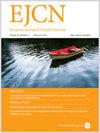The causal relationships between iron status and sarcopenia in Europeans: a bidirectional two-sample Mendelian randomization study
IF 3.6
3区 医学
Q2 NUTRITION & DIETETICS
引用次数: 0
Abstract
Previous studies have indicated potential associations between metals, lifestyle factors, and sarcopenia. However, the specific causal relationships between iron status, lifestyle factors, and sarcopenia remain unclear. Therefore, we conducted a bidirectional two-sample Mendelian Randomization (MR) approach to investigate these relationships. The exposure variables included iron status, living alone, coffee intake, alcohol taken with meals, and moderate physical activity, while the outcome variable was sarcopenia, assessed by grip strength in both hands and usual walking pace. We employed the Weighted Median (WM), the Inverse Variance-Weighted (IVW), and other MR methods to explore these problems for analysis. Simultaneously, we conducted a bidirectional MR analysis to assess whether sarcopenia has a reverse causal relationship with internal iron status. In our present research, we found serum iron (P = 0.033), ferritin (P = 0.001), transferrin saturation (P = 0.029) and coffee intake (P = 0.002) revealed a negative trend for sarcopenia, living alone (P = 0.022) and alcohol taken with meal (P = 0.006) showed a opposite trend for sarcopenia. Whereas sarcopenia showed negative trend for ferritin (P = 0.041) and transferrin saturation (P = 0.043), showed the opposite trend for transferrin (P = 0.021). Our study suggested that higher serum iron levels might reduce the risk of sarcopenia. Moreover, living alone and alcohol consumption might increase the sarcopenia risk, while coffee intake and moderate physical activity could reduce the sarcopenia risk.

欧洲人铁质状况与肌肉疏松症之间的因果关系:一项双向双样本孟德尔随机研究。
背景:以往的研究表明,金属、生活方式因素与肌肉疏松症之间存在潜在联系。然而,铁状况、生活方式因素和肌肉疏松症之间的具体因果关系仍不清楚。因此,我们采用了双向双样本孟德尔随机化(MR)方法来研究这些关系:暴露变量包括铁质状况、独居、咖啡摄入量、餐中饮酒和适量运动,而结果变量为肌肉疏松症,通过双手握力和平时步行速度进行评估。我们采用了加权中值法(WM)、逆方差加权法(IVW)和其他 MR 方法来探讨这些问题,以便进行分析。同时,我们还进行了双向磁共振分析,以评估肌肉疏松症是否与体内铁状况存在反向因果关系:在本研究中,我们发现血清铁(P = 0.033)、铁蛋白(P = 0.001)、转铁蛋白饱和度(P = 0.029)和咖啡摄入量(P = 0.002)与肌肉疏松症呈负相关趋势,独居(P = 0.022)和餐后饮酒(P = 0.006)与肌肉疏松症呈相反趋势。而铁蛋白(P = 0.041)和转铁蛋白饱和度(P = 0.043)与肌肉疏松症呈负相关,转铁蛋白(P = 0.021)与肌肉疏松症呈相反趋势:我们的研究表明,较高的血清铁水平可降低患肌肉疏松症的风险。此外,独居和饮酒可能会增加患肌肉疏松症的风险,而摄入咖啡和适量运动则可降低患肌肉疏松症的风险。
本文章由计算机程序翻译,如有差异,请以英文原文为准。
求助全文
约1分钟内获得全文
求助全文
来源期刊
CiteScore
10.60
自引率
2.10%
发文量
189
审稿时长
3-6 weeks
期刊介绍:
The European Journal of Clinical Nutrition (EJCN) is an international, peer-reviewed journal covering all aspects of human and clinical nutrition. The journal welcomes original research, reviews, case reports and brief communications based on clinical, metabolic and epidemiological studies that describe methodologies, mechanisms, associations and benefits of nutritional interventions for clinical disease and health promotion.
Topics of interest include but are not limited to:
Nutrition and Health (including climate and ecological aspects)
Metabolism & Metabolomics
Genomics and personalized strategies in nutrition
Nutrition during the early life cycle
Health issues and nutrition in the elderly
Phenotyping in clinical nutrition
Nutrition in acute and chronic diseases
The double burden of ''malnutrition'': Under-nutrition and Obesity
Prevention of Non Communicable Diseases (NCD)

 求助内容:
求助内容: 应助结果提醒方式:
应助结果提醒方式:


